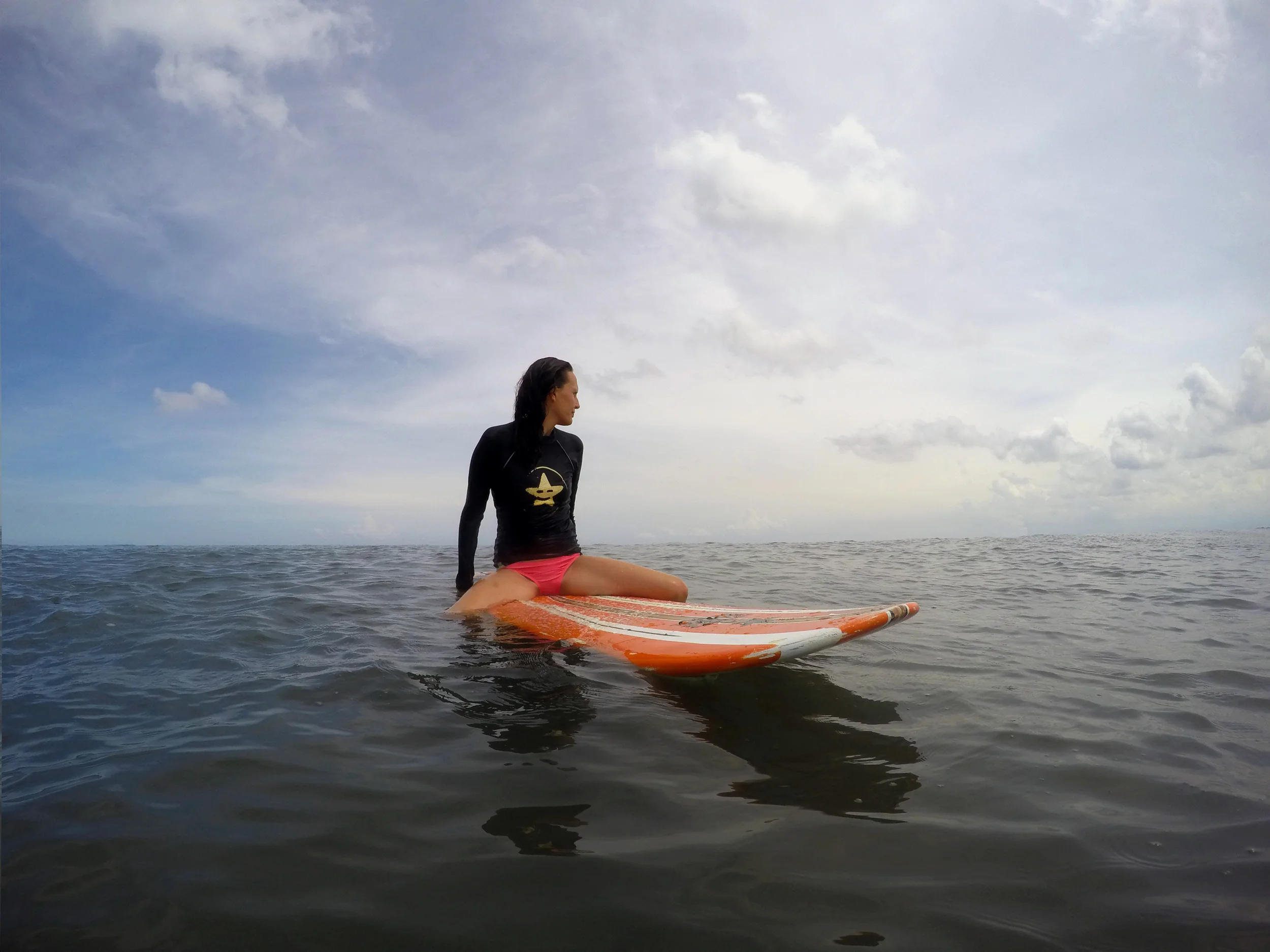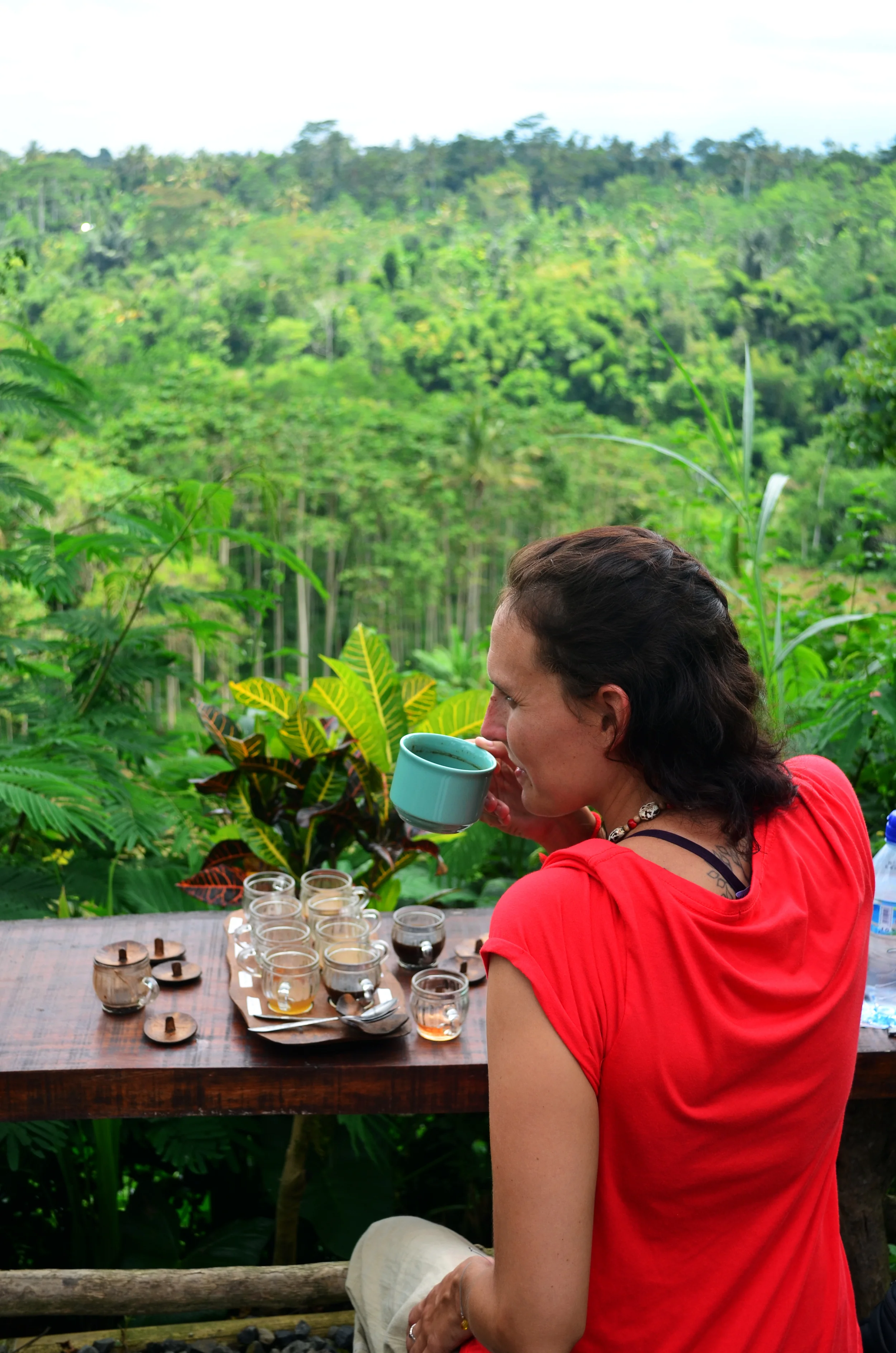The Surfer and The Taxi Driver
Kuta Beach, Bali
Greatest Moment: For one week we got to be surf-junkies. We learned quickly that the only beach along the western coast of Bali that we could learn to surf was Kuta Beach—the famed black hole for tourists, with its dirty beaches and the local’s businesses of shoving things under your nose constantly. We tried the quieter and cleaner sands of Legian Beach, but the waves proved to be too large, forceful, and the current too strong. We returned to Kuta Beach now in love with its dirtiness and busyness, because it is truly the perfect spot to learn to surf.
Every day the tide changes, but one can rely on Kuta to have the calmer and smaller waves, where you can focus on your technique. Our greatest moments were while surfing, whether we did it for one or two hours a day. It was exhilarating waiting for the wave, and once it began to form behind you, you paddled against its drag. In order to catch a wave, you must try and match its speed, making the paddling part quite important! Then when the wave begins to push you, you POP up—it sounds rather easy, however that is where the humor comes from. Our “pop” ups entailed either nose diving as the wave pushed our feet over our heads, face planting as our ambition misjudged the swell of the oncoming wave, or the moment that makes it all worth it—catching the wave perfectly and riding it into the shore.
Worst Moment: We began with beginner boards. These are made of a coarse foam that gives the beginning surfer the stability and balance to get a proper feel for how to surf a wave. After our first day of using it, we felt the raw skin of our thighs and knees from where they contacted the board. It was mildly uncomfortable, but by the third day on these boards Jamie could hardly bend her now-scabbed knees and swollen red hands. We both had rashes of the thighs and belly, and were determined to try the fiberglass boards regardless if we were ready or not. It became too painful, and our skin is still trying to heal.
Lesson Learned: Do you ever see those motivational posters that picture a surfer, and underneath says something like, “never give up” or “when life knocks you down, you can only get up again”? They have always been corny and without much meaning to us, but oh how that has changed. One thing we have realized is the power of waves and their ability to push and pull at you with an almost dangerous grip. When the waves were large, they seemed to come crashing into shore in packs of 3-5 waves, and all you can do is control your board and duck. Not to mention the unfortunate circumstance of trying to surf a wave only to have it break and crash on top of you, throwing you off your board and tumbling you back to shore. The WORST! But now we understand such motivational slogans—every time we were tossed and rejected by the ocean, we still got on that surf board and braved it again. Because life is about doing just that, catching moments and dealing with each punch to the face and spike of salt water shooting up your nose.
Cultural Insight: It was our ride home from Uluwatu Beach that we got a taste of Balinese culture. Our driver was an incredible man. His English was superb and he had a lightness of character that was very refreshing. When it comes to taxi drivers, one can always go wrong. But you get those gems too, that you end up paying more than you negotiated because you appreciate them for their honest living and their work ethic. Anyways, our driver was a great man. He educated us on the Balinese family, which we found quite different. For one, each island in Indonesia has its own distinct language. A person who can speak Balinese will not understand a person who speaks Javanese, though they are a 45 minute ferry ride away from one another. Everyone learns their island’s language as well as the Indonesian language as they grow up, and it is the universal Indonesian language that is used to communicate between people from different islands. Secondly, family units use the same naming system. Regardless of gender, the names are given in the order that person was born. The first child’s name is always Wayan, the second child’s is Made, the third child’s is Nyoman, and the fourth child’s is Ketut. It is structured this way originally so that families had four children, so that when the parent died, the four kids could carry the coffin equally. When a family has more than four kids, the naming starts over again, so that the first and the fifth child have the same first name, Wayan. When this happens, there is a middle name that is typically given to the child to help them be distinguished in schools and amongst friends. The middle name can come from the month they are born in, or from characteristics like if they were clumsy growing up. There are no last names. This is a tradition with Balinese people, as this island is primarily Hindu. Other islands have their own practices and customs, which makes Indonesia even more of a fascinating landscape of nature and people.



















